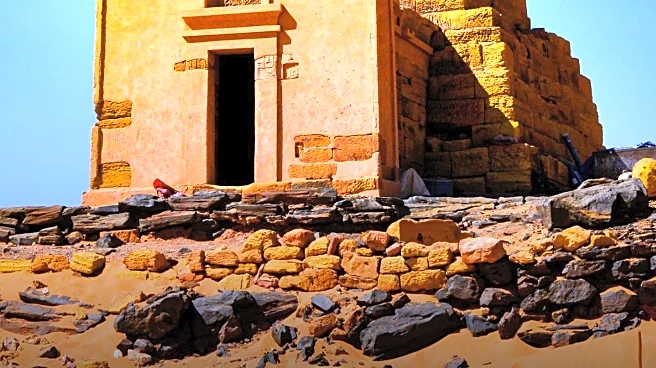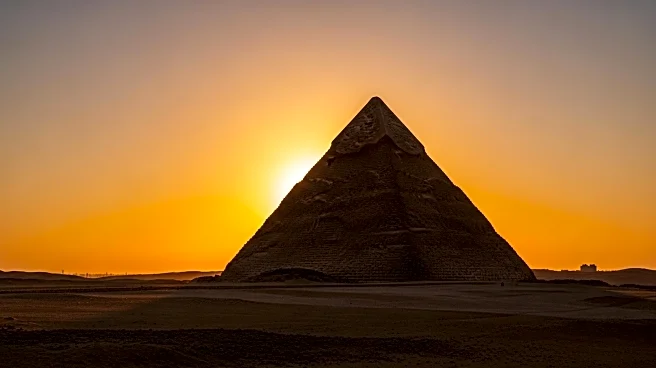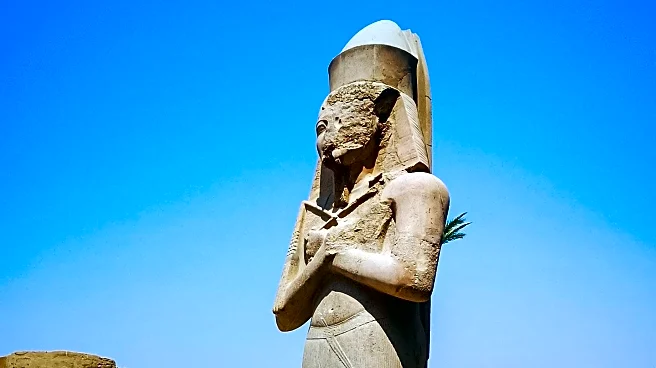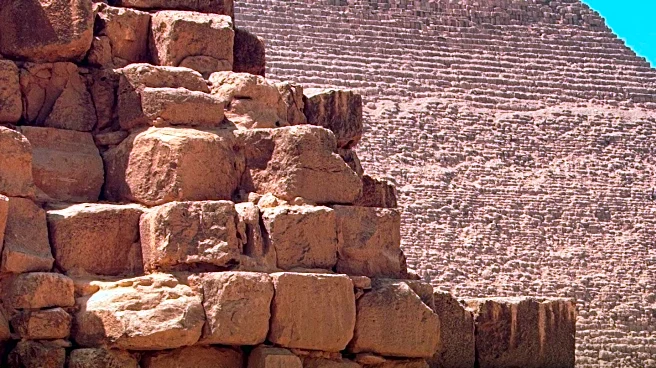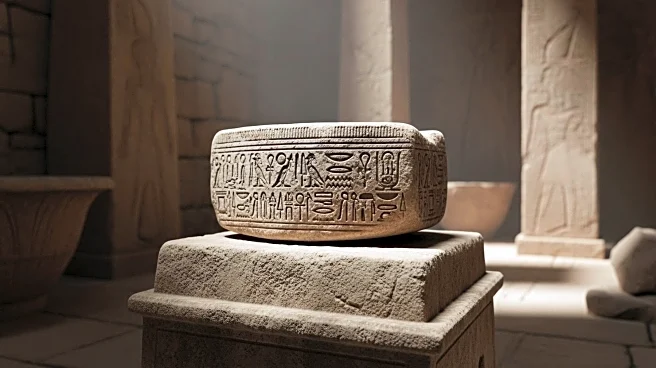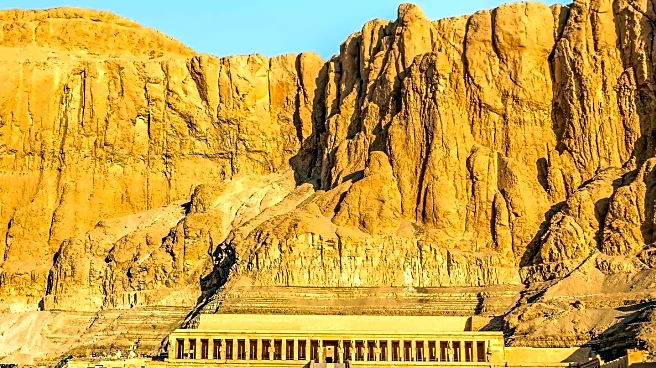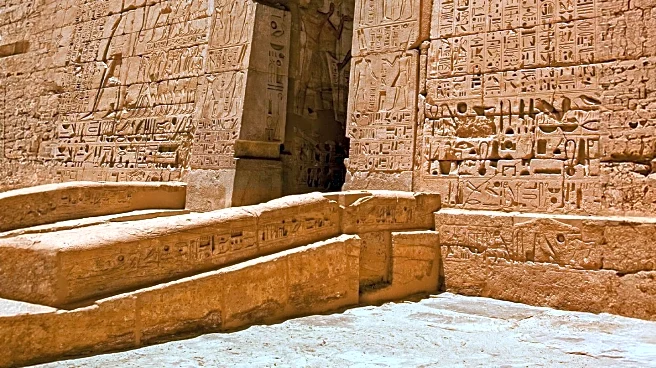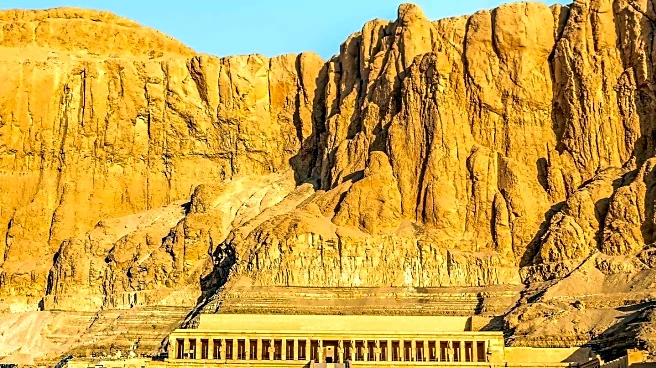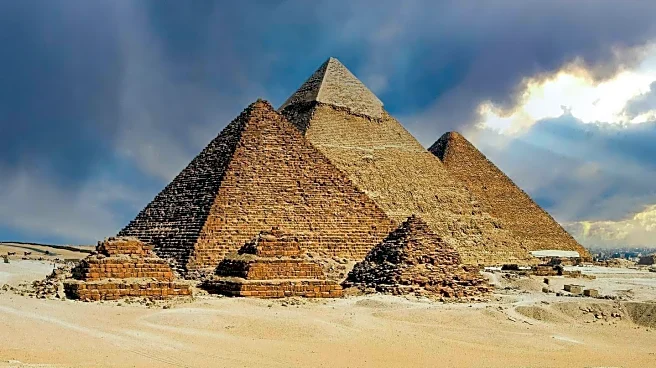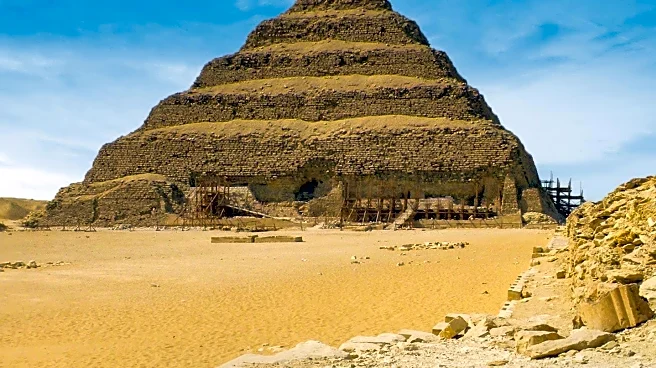What's Happening?
The tomb of Amenhotep III has been reopened to the public after a 20-year restoration effort. Located in the Valley of the Kings near Luxor, the tomb had suffered from structural issues and deterioration due to bats and humidity. The restoration involved cleaning paintings, stabilizing pillars, and installing monitoring devices. Amenhotep III, who reigned during the 18th dynasty, is known for his peaceful and prosperous rule. The tomb features a giant granite sarcophagus lid and paintings depicting the pharaoh receiving life from Egyptian gods.
Why It's Important?
The reopening of Amenhotep III’s tomb is a significant milestone in preserving Egypt's ancient heritage. It offers insights into the pharaoh's reign, which is considered a peak in Egyptian civilization. The restoration enhances Egypt's cultural tourism, attracting visitors interested in ancient history and archaeology. The project underscores the importance of international collaboration in heritage conservation, as researchers from Japan's Waseda University played a key role in the restoration. The tomb's reopening coincides with the upcoming inauguration of the Grand Egyptian Museum, further boosting Egypt's cultural offerings.
What's Next?
The reopening of Amenhotep III’s tomb may lead to increased tourism in the Luxor region, benefiting local economies and promoting cultural exchange. Authorities may continue to invest in the preservation and promotion of other historical sites, ensuring sustainable tourism practices. The Grand Egyptian Museum's inauguration will likely attract global attention, showcasing Egypt's rich archaeological treasures and enhancing its cultural diplomacy. Continued efforts to preserve and study ancient sites will contribute to a deeper understanding of Egypt's historical legacy.
Beyond the Headlines
The restoration of Amenhotep III’s tomb highlights the challenges of preserving ancient sites in the face of environmental and human-induced threats. It may encourage discussions on the ethical considerations of archaeological restoration and the balance between accessibility and preservation. The project could inspire future collaborations between international researchers and local authorities, fostering innovation in heritage conservation techniques.

